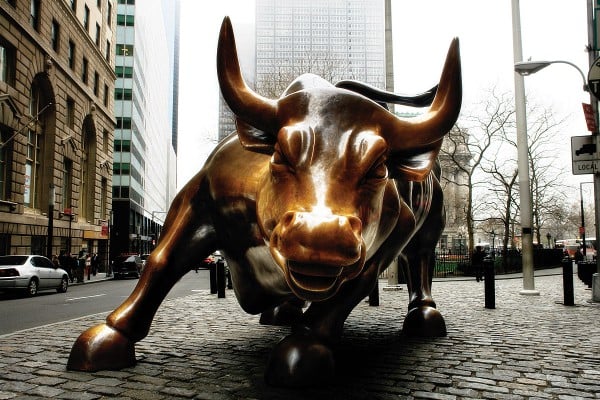Art World
Wall Street’s Bronze Bull Celebrates 25th Anniversary


Sarah Cascone

This week marks the 25th anniversary of the installation of Wall Street’s Charging Bull, installed without permission during a four-and-a-half-minute break in a night watchman’s rounds by sculptor Arturo Di Modica as a guerrilla art piece and gift to the city.
Di Modica personally shelled out $350,000 to make his three-and-a-half-ton, 18-foot-long dream a reality, casting the bronze statue in his SoHo studio, transporting it on a flatbed truck, and covertly delivering it to the center of Broad Street, in front of a Christmas tree and the New York Stock Exchange.
After the truck sped away, Di Modica stayed behind to see how New Yorkers would receive their gift, intended as a representation of the city’s fighting spirit and eternal optimism following the Black Monday stock market crash of October 19, 1987.
“It was love right away,” he told the Wall Street Journal. “They wanted to touch it, embrace it—it was beautiful.”
At first, however, the New York Stock Exchange did everything in its power to drive the bull out of town, enlisting first the police, unsuccessfully, and then a private contractor, who removed the massive statue to a Queens impound lot. The Parks Department and community activists banded together and within a few days found the bull a permanent home in Bowling Green.
Now an iconic symbol of the strength and vitality of the stock market and capitalism in general, the bull nevertheless developed a new set of detractors in post-recession America. This May, artist Sebastian Errazuriz created his own response to the work, a cash-stuffed golden cow piñata that seemed to critique the Wall Street bull as a false idol, suggesting that the disillusionment of the recession may have permanently tarnished Charging Bull‘s reputation. With the launch of the Occupy Wall Street movement in September 2011, the sculpture was seen as a natural target for protesters, and placed under 24-hour guard by the police and encircled with 20 metal barricades.
The statue did feature prominently in some imagery deployed by Occupy activists, including a striking photo by Vancouver’s Adbusters magazine of a ballerina gracefully balanced atop the bull as gas mask-wearing activists stand arm-in-arm behind it amid a cloud of smoke. Nevertheless, protesters left the physical statue alone, and the barricades were finally removed in March.